Stef GarlandStef is a founding member of Midcoast Growers Network, a keen gardener, and great photographer. The recent drought and severe water restrictions in the Mid Coast region brought home to us gardeners the importance of selecting plants that are water wise. Here are just a few of my favourite perennial plants that while being drought and heat tolerant don’t become escapees to the bush, and provide much welcome colour and contrast throughout the year.
The Long-leaf Waxflower, Philotheca myoporoides, a native to south eastern Australia, is also on my list of favourites. While only flowering in winter and spring, it has a spectacular display of pink buds and starry white flowers and the leaves have a lovely fragrance.
0 Comments
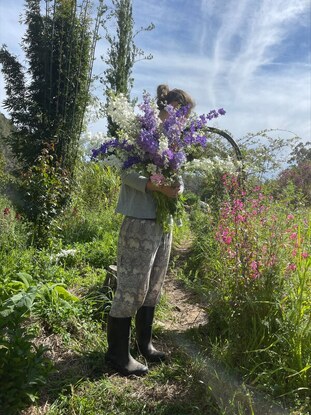 Arms overflowing with flowers for bunching (photo: provided by Rachel Falla) Arms overflowing with flowers for bunching (photo: provided by Rachel Falla) The summertime garden is all about abundance. Arms overflowing with flowers for bunching, and space cleared under the aircon to keep them cool! When I think about the summer garden, I think oversized, prehistoric grandeur. Flowers in a summer garden should be allowed to grow over our heads. If you want flowers in the spring time, plant in autumn. If you want flowers in the summer, plant now! A summer garden needs the heat lovers - the zinnias, cosmos and amaranths of the world. Cut and come again flowers are invaluable in a cut flower garden. The zinnia queen lime series is a firm favourite of mine for its beautiful soft mix of lime, blush and pastel, with each flower a different shade to the next! At the moment we are also planting out celosia, orlaya, scabiosa, phlox, strawflowers, coreopsis, statice, sunflowers and dahlia tubers. Dahlias are worth their weight in gold and more. For very little effort you are rewarded with the most awe-inspiring blooms of all colours, and a huge range of shapes and sizes flowering in summer and into autumn. Dahlia flowers last longest when freshly picked from your garden. Florists love local dahlias because these flowers do not travel well. Local is always best when it comes to flowers! We grow cut flowers and oranges at Caffreys Flat on Biripi land alongside the Nowendoc River. The Little Orange Farm is in a renowned orange growing area, with our nearest town of Mount George being once famous for its orchards. These have since unfortunately been removed. Alongside our flower garden is the orange orchard consisting of roughly 250 trees, some of which were planted back in the 1950s. Our area gets frost in winter, gusty winds in the springtime, and a rising river in autumn. Our off-season for the flowers is in the winter time when the oranges come into their own, followed in the spring time by their blossoms. We are growing our flowers roughly on a third of an acre.
I’ve fallen in love with the wild growing verbena and love using it in arrangements. The best part is that I don’t have to sow or plant a thing. Embrace what is growing wildly and try to start seeing a flower and not a 'weed'. There is always a lot of forward planning to make sure we have plants ready to go in the ground at their ideal growing time. As they say, do something today that you will thank yourself for tomorrow! A Gardener’s List: Bed prep, sowing, transplanting, deadheading, mulching, planning. Smell the mint (especially if it’s apple mint!), make a bouquet to give to a friend, collect seed, take a photo, look closely, feel small. 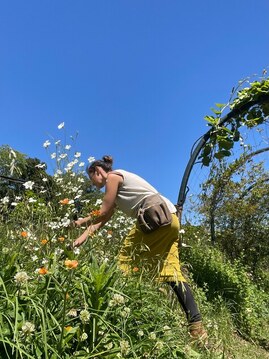 Whilst it is important to be able to look ahead and plan and dream of that summer garden, it is just as important that I be present in the here and now – appreciating today’s flowery gifts. I never go to the garden without my camera phone and scissors. There will always be something new and inspiring in a garden day after day and I never tire of bearing witness to it. I so enjoy sharing my excitement with others. Right now, the snapdragons are in full bloom, equally loved by me and the caterpillars. There are sporadic roses on the bushes offering us a teaser of what’s to come, and the corn cockle of pure white floats above it all like butterflies. 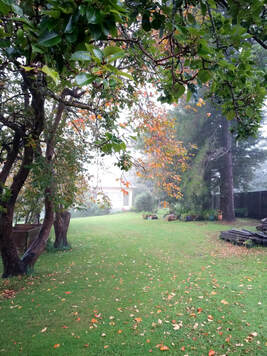 Tranquil Garden (photo: Kara Woodward) Tranquil Garden (photo: Kara Woodward) The Tranquil Garden Nursery is my realization of a desire to live on the land, with the ability to rescue more animals, and to grow lots of flowers and food. I grew up in the Cotswolds in the United Kingdom, and moved to Australia at the ripe age of four. A few years later our family moved to 250 acres in the Hunter Valley, which was also a commune for about four years. There, as I wandered the land alone, I developed a true love of animals and plants. This led me to a career working with animals as a Veterinary Nurse, a Zookeeper, and wildlife keeper. I retrained as a teacher after the loss of most of my precious animals during the Canberra 2003 devastating fires. Unable to stick to a mandated unrealistic curriculum, I wanted to teach more life skills, such as animal care, and to have more than just a lunchtime gardening club. This forced me to leave teaching and pursue life on the land again. Initially, I worked gardening in many local Mid Coast gardens, and not so much in my own. When I met Lainey our local Matriarch in about 2011, we really connected. Her obsession with Dahlias resonated with me, and so began my own collection of these tuberous perennials. Now 92, Lainey is still living in her own home. From then on, I grew a lot of mostly flowering plants with produce and started to take them to local farmers markets such as Wingham, Gloucester, Taree, Forster and others. This as many know is bloody hard work, especially as selling plants can be hit and miss, so I don’t go to the markets to sell anymore. Around the same time - in 2011 - I took on two rescue Whippet cross red Cattle dog pups. One I gave to my Mum. Now I have Miranda, who has had quite the journey right by my side. 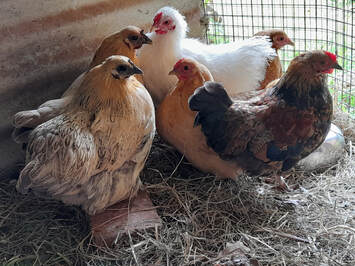 Nettles grow in my chicken's pen (photo: Kara Woodward) Nettles grow in my chicken's pen (photo: Kara Woodward) Let me share what happened. Growing plants without chemicals is so very important to me. Recently, in fact in June my dog came down with mysterious symptoms and I took her to one vet as her symptoms were mild at that time. Not long after that, Miranda was unable to eat or drink by herself. Nursing her myself had not improved her condition, and she could only just manage to go outside by herself. She was put onto a drip and nursed for a week in a local Veterinary Hospital. Seemly as a last resort she was put on to prednisolone which initially helped but was a double-edged sword as not long after she developed anaemia and almost died. I took her to the vet again and no connection was made with the prednisolone by them, however between myself and a friend we worked out that it was due to the prednisolone and she was bleeding in her bowel. Massive doses of CBD oil I believe, and diet change saved her life. I reduced the dose of Prednisolone and got her off it fast whilst introducing a whole food diet made from scratch. this diet comprised and still does of cooked Bok choy, raw liver and cooked pumpkin, or sweet potato blended all together with a small amount of water. I also provide her with a bone broth frequently and fresh bones. After about a week on this diet, she started to improve remarkably. Then I started using the Nettles that grow in in my chicken’s pen. Nettles are apparently a good sign of a healthy soil, so that is great to know. Miranda frequently gets them blended in with her food. I do believe that this, along with CBD oil and homemade activated charcoal, has saved her life. Now Smudge the cat is on this diet too. He has lost weight, and he's a lot happier and brighter. So now I've accepted - it's more than important than ever that I continue to grow organic flowers and organic vegetables, and not use any chemicals. No chemicals are used in the house or in the garden or for myself. I've stopped dyeing my hair, and allowed myself to go grey quite disgracefully - but I feel healthier as well. I've also modified the chickens' and ducks' diets owing to a possible problem with either the food or a build-up of parasites in the pen. I took one of the ducks to a vet to have a look at and she was prescribed antibiotics which did help initially. Unfortunately, she went down again. My friend and I had a discussion, and it was based on her advice that I put the duck onto the activated brown rice which Miranda is also on. The duck soon recovered. From now on, the ducks and the chickens have plain wheat for breakfast and in the afternoon, they have sprouted wheat along with the Greens I used to give them, and scraps. I've also limed all their pens at 100 g per square metre with Mudgee Dolomite lime against possible parasites. Being home more means I can help more with local injured and sick animals. I take in abandoned ducks, chickens, and the odd cow. All the animals here have a forever home. I’m a member of the wonderful Manning Valley Flower Collective and sell my organic flowers locally. I sell most of my plants via a website www.tranquilgarden.com.au and via eBay. I post plants across Australia except Tasmania, Northern Territory and Western Australia, due to quarantine restrictions.
|
AuthorArchives
February 2023
Categories |

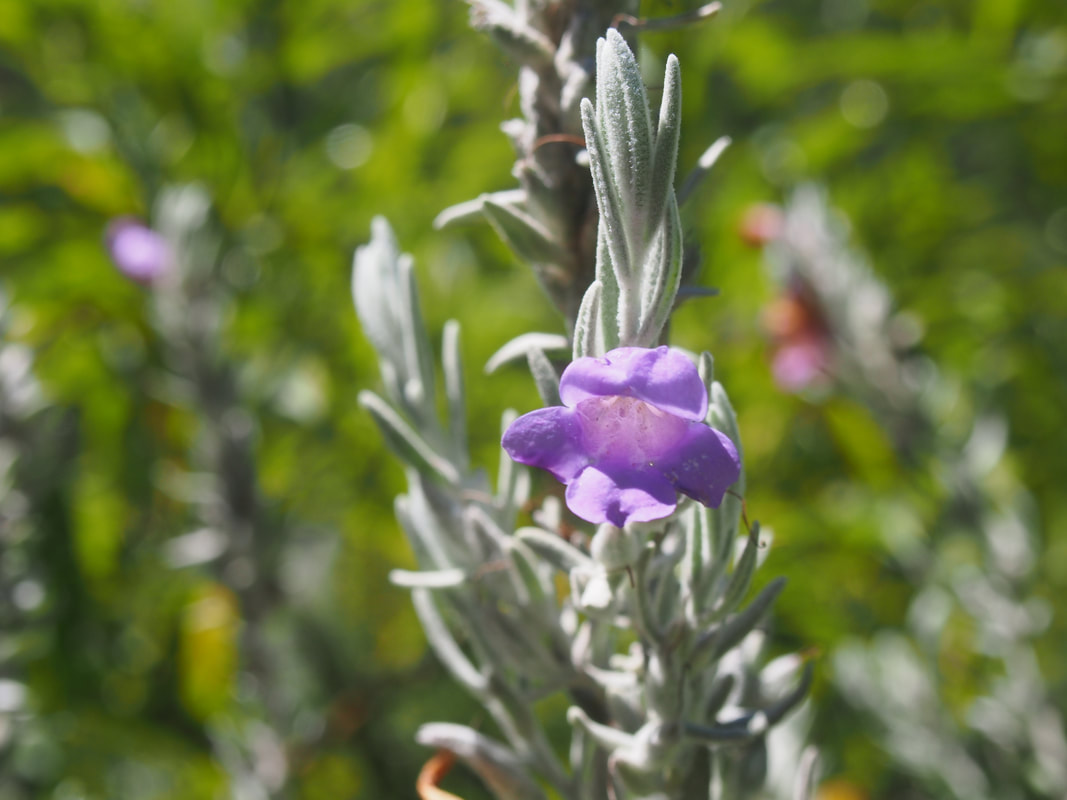
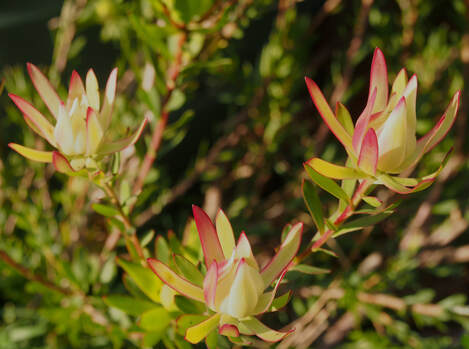
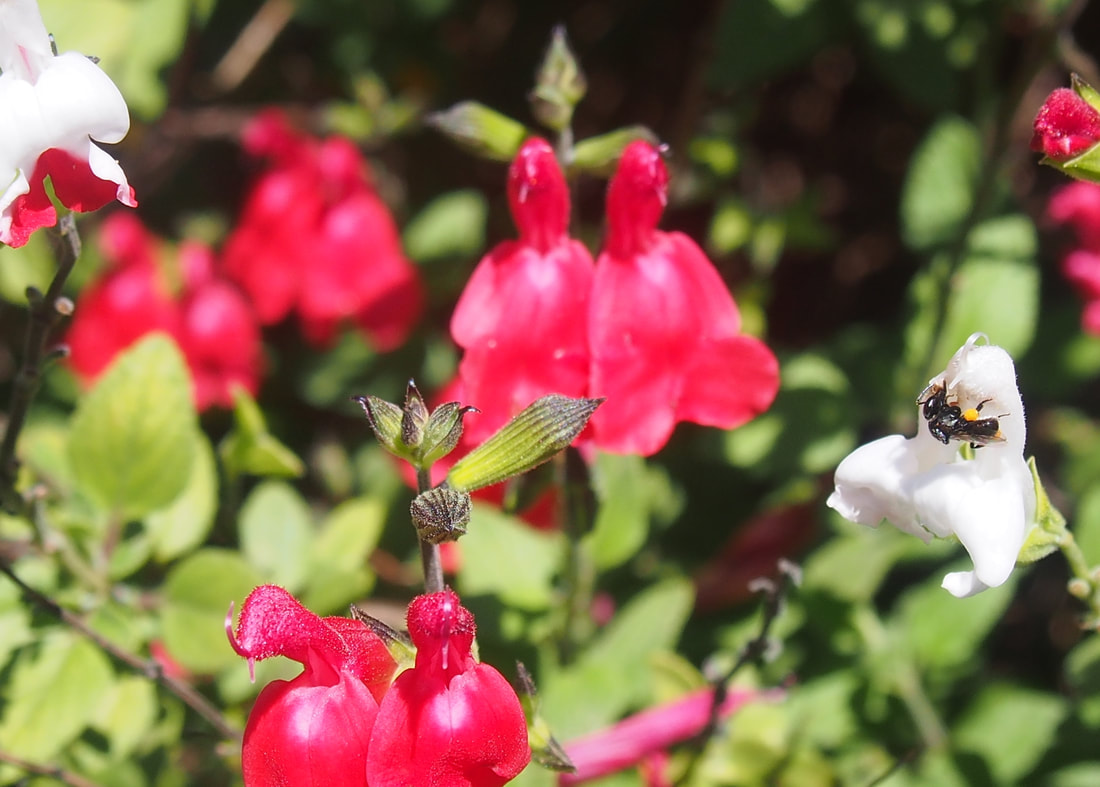
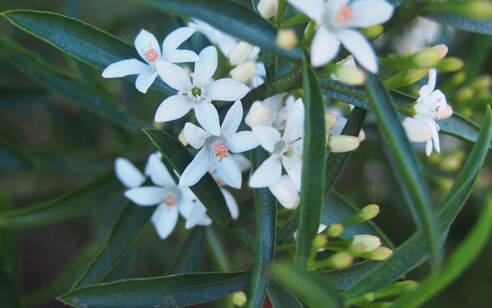
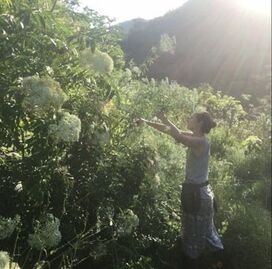

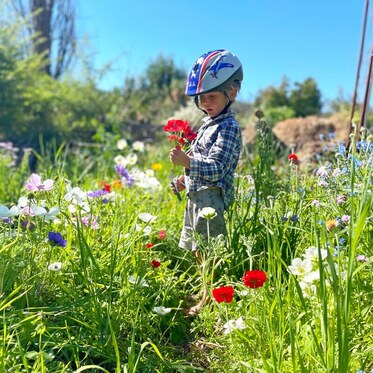
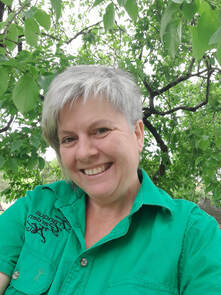
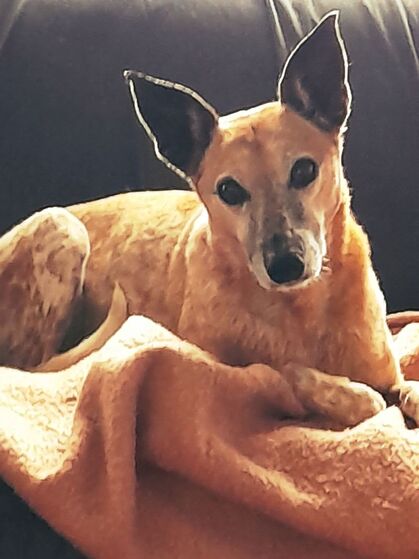
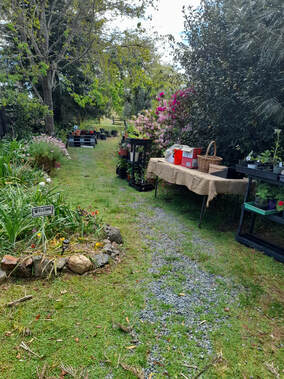
 RSS Feed
RSS Feed
